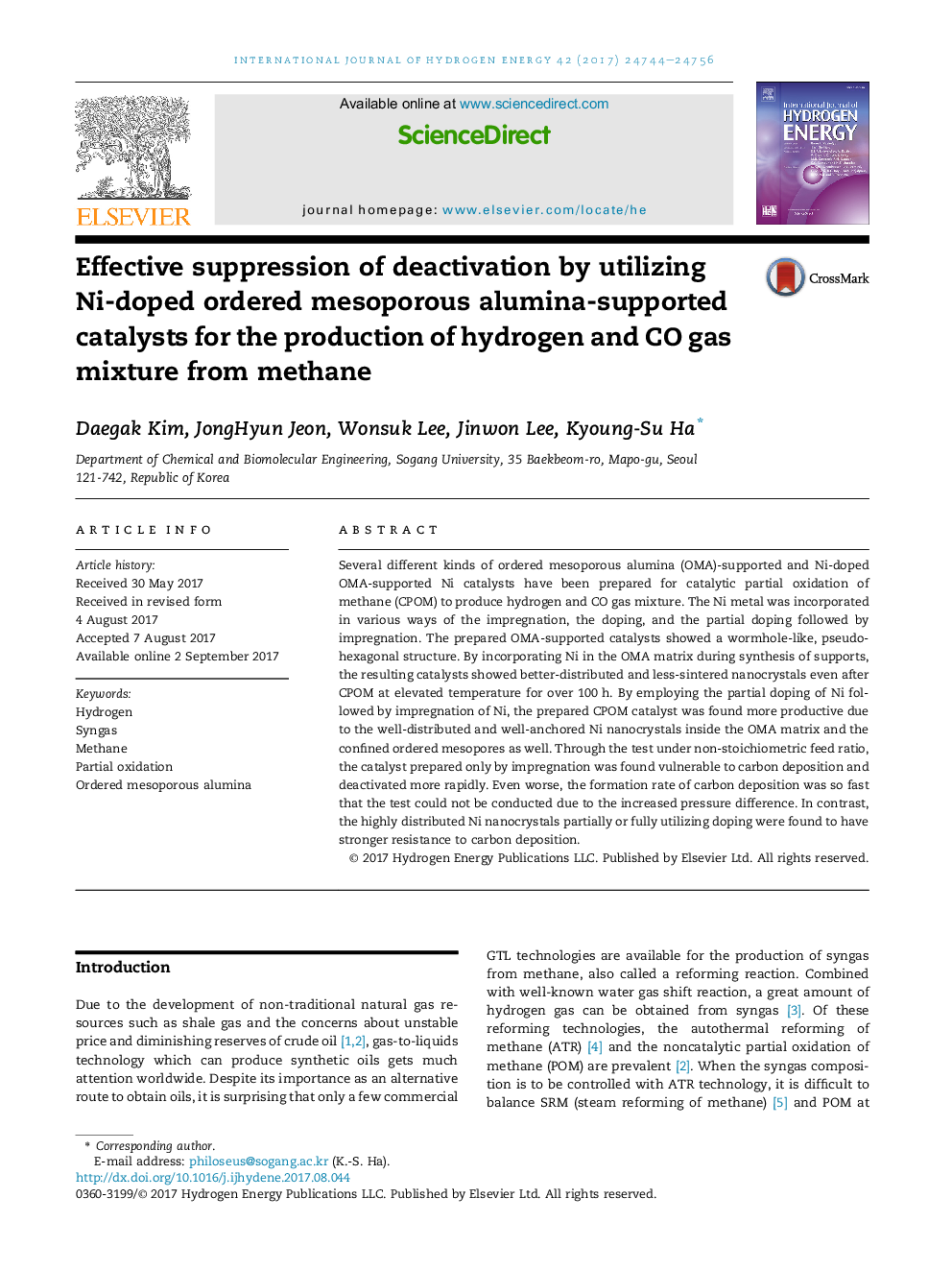| Article ID | Journal | Published Year | Pages | File Type |
|---|---|---|---|---|
| 5145106 | International Journal of Hydrogen Energy | 2017 | 13 Pages |
â¢Ordered mesoporous alumina (OMA)-supported catalysts are used for H2 production.â¢A catalyst prepared by partial doping and impregnation is the most efficient one.â¢Effects of Ni-doped OMA on catalytic performance are investigated.â¢Effects of Ni-doped OMA on deactivation are investigated.
Several different kinds of ordered mesoporous alumina (OMA)-supported and Ni-doped OMA-supported Ni catalysts have been prepared for catalytic partial oxidation of methane (CPOM) to produce hydrogen and CO gas mixture. The Ni metal was incorporated in various ways of the impregnation, the doping, and the partial doping followed by impregnation. The prepared OMA-supported catalysts showed a wormhole-like, pseudo-hexagonal structure. By incorporating Ni in the OMA matrix during synthesis of supports, the resulting catalysts showed better-distributed and less-sintered nanocrystals even after CPOM at elevated temperature for over 100Â h. By employing the partial doping of Ni followed by impregnation of Ni, the prepared CPOM catalyst was found more productive due to the well-distributed and well-anchored Ni nanocrystals inside the OMA matrix and the confined ordered mesopores as well. Through the test under non-stoichiometric feed ratio, the catalyst prepared only by impregnation was found vulnerable to carbon deposition and deactivated more rapidly. Even worse, the formation rate of carbon deposition was so fast that the test could not be conducted due to the increased pressure difference. In contrast, the highly distributed Ni nanocrystals partially or fully utilizing doping were found to have stronger resistance to carbon deposition.
Graphical abstractThe hybrid catalyst with Ni-OMA support showed excellent resistances to sintering and coking.Download high-res image (629KB)Download full-size image
